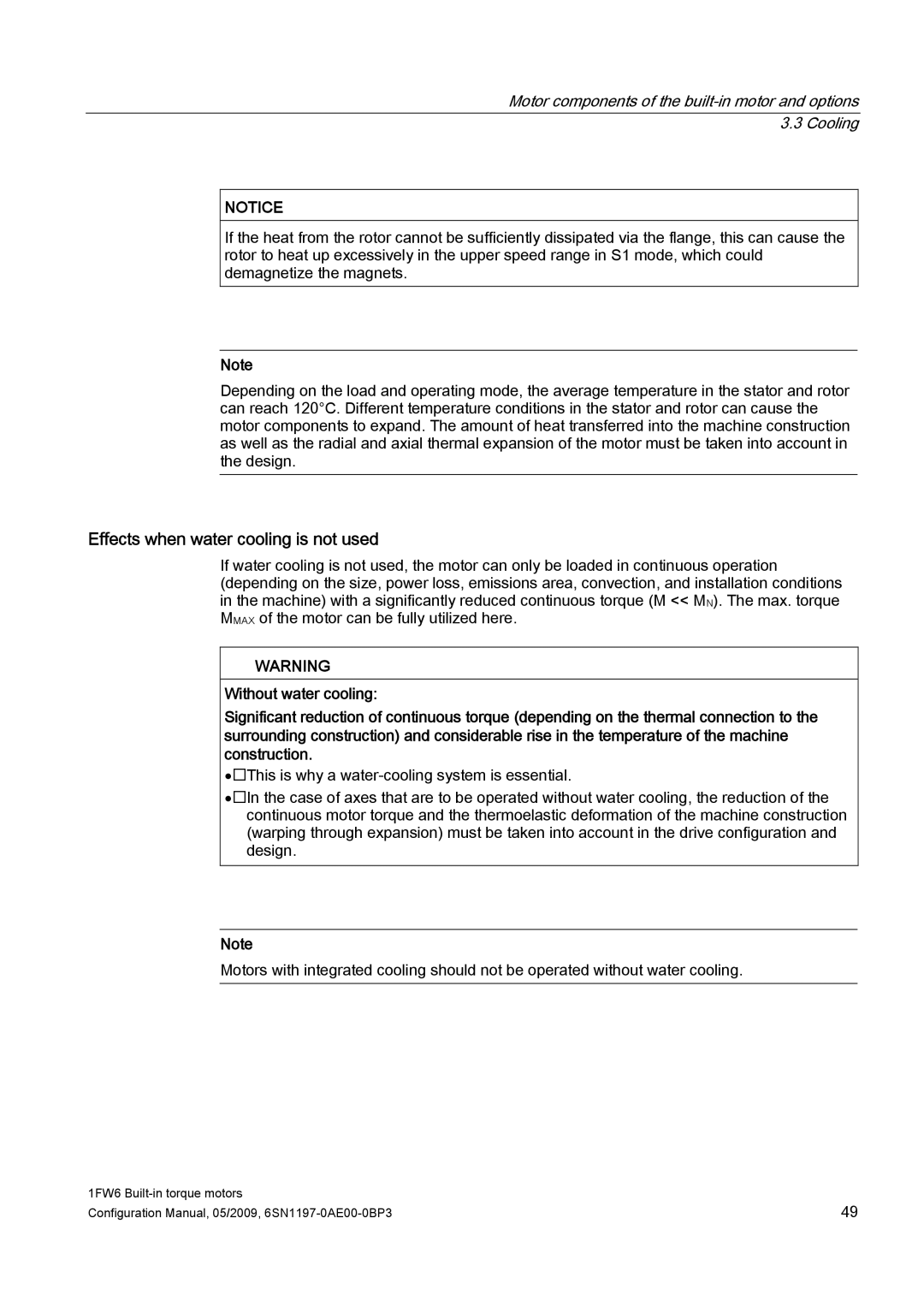
Motor components of the
NOTICE
If the heat from the rotor cannot be sufficiently dissipated via the flange, this can cause the rotor to heat up excessively in the upper speed range in S1 mode, which could demagnetize the magnets.
Note
Depending on the load and operating mode, the average temperature in the stator and rotor can reach 120°C. Different temperature conditions in the stator and rotor can cause the motor components to expand. The amount of heat transferred into the machine construction as well as the radial and axial thermal expansion of the motor must be taken into account in the design.
Effects when water cooling is not used
If water cooling is not used, the motor can only be loaded in continuous operation (depending on the size, power loss, emissions area, convection, and installation conditions in the machine) with a significantly reduced continuous torque (M << MN). The max. torque MMAX of the motor can be fully utilized here.
![]() WARNING
WARNING
Without water cooling:
Significant reduction of continuous torque (depending on the thermal connection to the surrounding construction) and considerable rise in the temperature of the machine construction.
∙This is why a
∙In the case of axes that are to be operated without water cooling, the reduction of the continuous motor torque and the thermoelastic deformation of the machine construction (warping through expansion) must be taken into account in the drive configuration and design.
Note
Motors with integrated cooling should not be operated without water cooling.
1FW6 | 49 |
Configuration Manual, 05/2009, |
